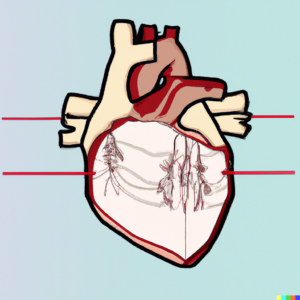A cardiac stress test, also known as an exercise stress test, is a diagnostic test that measures how well the heart functions during physical activity. It is done to evaluate symptoms such as chest pain, shortness of breath, or to assess the effectiveness of treatment for known or suspected heart disease.

Exercise stress testing is typically done on a treadmill or stationary bike. The patient is connected to an electrocardiogram (ECG) machine to monitor the electrical activity of the heart, and blood pressure is also monitored during the test. The test begins with the patient walking or cycling at a low level of intensity, and the intensity is gradually increased over time. The test is stopped when the patient reaches a predetermined level of exertion or when symptoms such as chest pain or shortness of breath occur. The test results are then analyzed to assess the patient’s cardiovascular fitness and to identify any abnormalities in the heart’s function. The test usually takes around 20-30 minutes.
Pharmacological stress testing is a variation of a cardiac stress test that uses medication to artificially increase the heart’s workload, rather than physical activity. It is used when a patient is unable to exercise, or when the results of an exercise stress test are inconclusive. The advantage of pharmacological stress testing is that it can provide information about the blood flow to the heart in patients who are not able to exercise.
The risks associated with pharmacological stress testing include side effects from the medications used, such as nausea, headache, and low blood pressure. The test is done in a hospital or clinic under the supervision of a healthcare provider.
Pharmacological stress testing is typically recommended for patients with known or suspected heart disease who are unable to exercise. Medications used for the test include dobutamine, adenosine, and regadenoson. These medications can cause side effects such as flushing, shortness of breath, and chest discomfort.
Nuclear stress testing involves injecting a small amount of radioactive material into the bloodstream and then taking pictures of the heart with a special camera. This test is done to evaluate blood flow to the heart muscle, and is typically done in conjunction with a stress test (either exercise or pharmacological) to provide a more complete picture of the heart’s function.
If you have any concerns please see your provider.